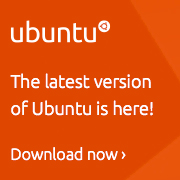The war between open source and private source is over
![]() Next up, after lunch this is on the slate: Enterprise Keynote: “Peace Treaty Between Open Source and Private Source – A Customer-Centric View” by Robert Shimp of Oracle.
Next up, after lunch this is on the slate: Enterprise Keynote: “Peace Treaty Between Open Source and Private Source – A Customer-Centric View” by Robert Shimp of Oracle.
The war between open source and private source is over. Customers care about pragmatic, real-world solutions that help grow their businesses. This keynote will discuss the synergies between open source and private source with a practical, customer-centric view. Where can open source and private source co-exist? How can customers benefit from this synergy and solve real business problems? What the are the best ways to leverage open source?
Robert stresses that we’re seeing blurring lines, and definitely no war. He notes some great open source projects, and explains why many closed source companies have opened up parts of their code, like e.g. IBM or Sun, while open-source companies like Novell are also promoting closed source parts at the same time.
Oracles view on the open source (development model) seems to be rather pragmatic – seeking coexistence instead of confrontation. This seems timely, when we’re seeing converging business models (like e.g. dual licensing models) and technical integration through open standards, which enable interplay, anyway.
Now he notes the worthy contributions of large commercial software vendors (yes, they deserve credit, of course this makes also good business sense and is not all altruism, huh?):
– distributing OSS with products
– submitting and fixing bugs in OSS
– enhancing OSS with enterprise features
– providing support for OSS for customers
As open source projects are diverse (target market, community of developers, licences, etc.) and Oracle wants to make an impact in the market place, they’re evaluting their OSS resource allocation by these and more criteria.
So what’s Oracle’s open source strategy, Robert tells us that it’s to
– promote and support popular open source
– enhance customer support experience (Oracle as a single source for popular enterprise OSS)
– speed up time-to-innovation (OSS as source of innovation, driving open innovation, leveraging the ideas of a distributed and diverse community of developers)
– expand the developer community
Robert closed his talk by presenting a nice nine-area-matrix with decision heuristics on “when to choose open-source”. I haven’t found this diagram online, so like with the other presentations this will have to wait until the nice people of Heise event put the slides up on their site (here they are).
Btw, german language information on Oracles open source strategy can be found here.




